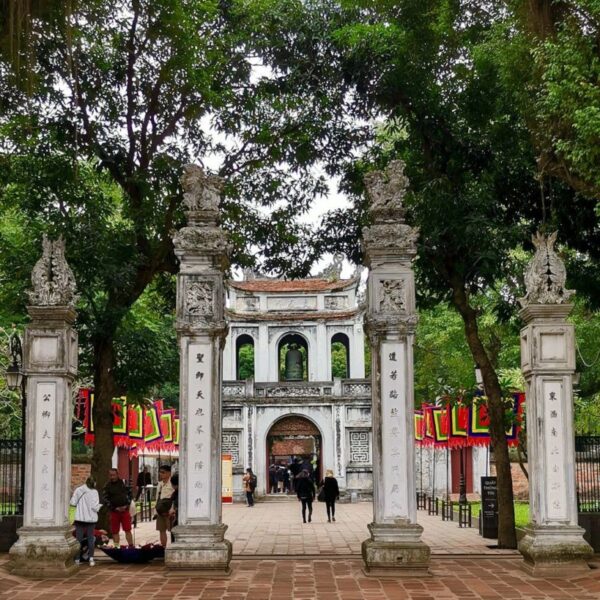article content
Temple of Literature – Vietnam’s Historic Cradle of Education
Overview

Nestled at 58 Quoc Tu Giam Street in Hanoi’s Dong Da District, the Temple of Literature is a treasured cultural landmark and known as Vietnam’s very first university. Built in 1070 under the reign of King Ly Thanh Tong, the temple was originally dedicated to honoring Confucius, the great Chinese philosopher whose teachings shaped Vietnam’s ancient educational system.
More than a place of worship, it was also a school exclusively for the royal family and top scholars. The term “Temple of Literature” reflects the deep emphasis on literature and moral learning within the Confucian system, which was the foundation of formal education at the time. When it was first established, Vietnam had no writing system of its own, so classical Chinese characters were widely used in inscriptions and temple decorations.
Architectural Highlights
The complex is divided into five distinct courtyards — a meaningful number in Eastern philosophy, representing the five essential elements: metal, wood, water, fire, and earth, as well as five key virtues and relationships in Confucian thought.
Upon entering the site, visitors are greeted by the Main Gate, followed by the Middle Gate. Atop this gate is a striking symbol: two carp facing a central urn, representing scholarly perseverance and success. To the sides, the gates named “Thanh Duc” (Virtue) and “Dat Tai” (Talent) highlight the Confucian values held in highest regard by students and scholars.
One of the most iconic structures here is Khue Van Cac, or the Pavilion of the Constellation of Literature, added during the Nguyen Dynasty in the 18th century. This elegant pavilion has become a symbol of Hanoi itself.
Deeper into the complex lies the Stele Garden, where stone steles mounted on turtle statues commemorate successful scholars from royal examinations dating back to the 15th century. Each stele provides historical context, examination details, and names of honored scholars.
The Great House of Ceremonies was once the sacred site where offerings were made to Confucius, while the Main Sanctuary now houses an altar dedicated to Chu Van An, a revered Vietnamese teacher who symbolizes integrity and academic excellence.
Despite centuries of change, the Temple of Literature has retained its classical charm and continues to serve as a proud reminder of Vietnam’s intellectual and cultural heritage.
Getting There
To reach the Temple of Literature, travelers can take public buses such as routes 02, 03, or 41. Alternatively, you can ride a motorbike or bicycle — but take note, this area has many one-way streets, so be mindful of the traffic flow and local signs!


